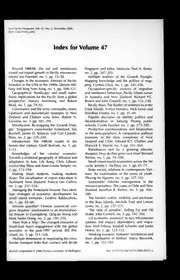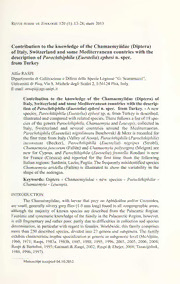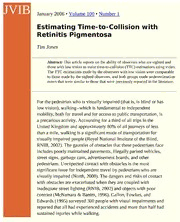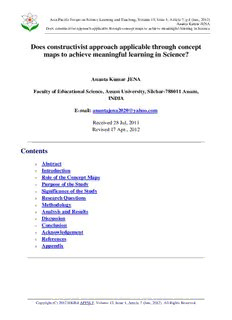
Does constructivist approach applicable through concept maps to PDF
Preview Does constructivist approach applicable through concept maps to
Asia-Pacific Forum on Science Learning and Teaching, Volume 13, Issue 1, Article 7, p.1 (Jun., 2012) Ananta Kumar JENA Does constructivist approach applicable through concept maps to achieve meaningful learning in Science Does constructivist approach applicable through concept maps to achieve meaningful learning in Science? Ananta Kumar JENA Faculty of Educational Science, Assam University, Silchar-788011 Assam, INDIA E-mail: anantajena2020@yahoo.com Received 28 Jul, 2011 Revised 17 Apr., 2012 Contents o Abstract o Introduction o Role of the Concept Maps o Purpose of the Study o Significance of the Study o Research Questions o Methodology o Analysis and Results o Discussion o Conclusion o Acknowledgement o References o Appendix Copyright (C) 2012 HKIEd APFSLT. Volume 13, Issue 1, Article 7 (Jun., 2012). All Rights Reserved. Asia-Pacific Forum on Science Learning and Teaching, Volume 13, Issue 1, Article 7, p.2 (Jun., 2012) Ananta Kumar JENA Does constructivist approach applicable through concept maps to achieve meaningful learning in Science Abstract This study deals with the application of constructivist approach through individual and cooperative modes of spider and hierarchical concept maps to achieve meaningful learning on science concepts (e.g. acids, bases & salts, physical and chemical changes)). The main research questions were: Q (1): is there any difference in individual and cooperative modes of spider concept maps’ to achieve meaningful learning in science? Q (2): is there any difference in individual and cooperative modes of hierarchical concept maps’ to achieve meaningful learning in science? Q (3): out of spider and hierarchical maps, which one is more effective to achieve meaningful learning in science? Q (4): is this concept map is being applicable for constructivist approach? Sixty-four 7th grade students from an Indian elementary school participated in the study. Thirty-four and thirty participants treated through spider and hierarchical concept map approach with both cooperative and individual modes. It was an immediate and delayed test experimental design. Two teaching approaches used for two experimental groups: one based upon spider concept map approach and other was hierarchical map approach. After all, students’ immediate and delayed, cooperative and individual map of both groups were scored and analyzed by using, Jena & Panda, 2009 scoring procedure. The parametric tests, such as one-way ANOVA and Tukey-Kramer Multiple Comparisons Test used to identify any differences between spider and hierarchical map approach, concerning cooperative and individual modes of learning. Both cooperative spider and hierarchical concept map were significantly better than individual learning in science concept. Therefore, concept map is a constructivist learning Keywords: Constructivist learning, cooperative learning; elementary school; hierarchical concept map; individual learning; spider concept map Introduction The current method of teaching science in primary schools is often didactic and does not engage pupil’s prior knowledge actively (Toh, Ho, Chew & Riley, 2003). Instead of understanding science concepts, pupils tend to view science is a piece of information. They do not see the big picture of a unit. As a result, new concepts are not assimilated into their long-term memory (Novak & Gowin, 1984). Making Copyright (C) 2012 HKIEd APFSLT. Volume 13, Issue 1, Article 7 (Jun., 2012). All Rights Reserved. Asia-Pacific Forum on Science Learning and Teaching, Volume 13, Issue 1, Article 7, p.3 (Jun., 2012) Ananta Kumar JENA Does constructivist approach applicable through concept maps to achieve meaningful learning in Science conceptualization, clearing misconception, generating idea, validation of scientific knowledge and cultivation of recent ideas are the emerging attempts in science teaching and learning process. It also enhances student’s scientific temper, objectivity, critical thinking, prejudice and freedom from science phobia (Novak, 1993). Therefore, several new methods of teaching have been developed and tried out at India and abroad. But it is seen, teachers and teacher educators always in stress to complete the content of science in school. Moreover, content should not be ignored, and to understand, various facts, principles, theories, these should be represent hierarchically (Novak, 1990) and sequential manner (Adult, 1995). Science content and concepts are linked with so many previous and new concepts, sub concepts, examples and processes. In the same time, teacher does not teach these processes like; how to link, interlink the existing concepts with previous concepts and teacher should not ignore the student’s past experience. Similarly, freedom should be given to them, to use their experience, for making, doing, experimenting, reading, discussing, asking questions, listening, and thinking, and expressing ideas individually or in groups. Relating to this idea, constructivist philosophers have believed that, learning is a process; it helps for the construction of knowledge (Fraser, & Adward, 1987). As Novak and Gowin say, (1999, p. 36): “Learning is the meaning of a piece of knowledge, requires dialog, to exchange sharing sometimes.”In this context, meanings can be shared, discussed, negotiated.” The constructivist assumes teaching as a “common, shared process, where the student, thanks to his teacher’s help, can show himself progressively good and autonomous in problem solving, concept using, having certain attitudes and in many other questions” (Solé and Coll, 2001, p. 22). Students may change their knowledge schemes and own thinking schemes at more complex situations by interacting and collaborating ideas (Vygotsky, 1991). In a study, (Okebukola, 1990) thanks to each student for their successful work or performance for a task, which he would not be able to do if he worked individually Role of the Concept Maps A concept map is a graphic organizer, which uses schematic representation, hierarchically to organise a set of concepts, connected by means of words in order to build meaningful statements. It shows meaningful relationship between concepts in the shape of propositions, and it reveals each student’s comprehension and Copyright (C) 2012 HKIEd APFSLT. Volume 13, Issue 1, Article 7 (Jun., 2012). All Rights Reserved. Asia-Pacific Forum on Science Learning and Teaching, Volume 13, Issue 1, Article 7, p.4 (Jun., 2012) Ananta Kumar JENA Does constructivist approach applicable through concept maps to achieve meaningful learning in Science knowledge structure (Novak and Gowin, 1999). Novak and Gowin (1999, p. 1) tells us “concept mapping is a way to help students and educators to see the meanings of learning materials.” It reveals the way in which we could assimilate the concept structure with the source of knowledge, on which the map prepares. When it is made by a working group and being shared by all students, it gives colourful pleasure oftheir reflexive thought (Novak and Gowin, 1999) and it can become an excellent process of building knowledge in a social environment that is cooperative and constructivist. To put it briefly, concept maps are excellent tools for a cooperative activity that will lead to a very meaningful learning (Novak, 2002). Out of different types of concept maps, spider concept map may be organized by placing the central concept in the centre of the map and outwardly radiating sub concepts linked to it and students may easily understand the cause/effect relationships of science by linking, interlinking, sub concepts and examples with the super concept. Their cognitive structure increases radially by the collaboration of new and old knowledge (Beissner, Jonassen & Grabowski, 1994). Spider concept map is a multi flow map, in which multiple outcomes found by the multiple inputs of concepts, sub concepts (Merrill &Tennyson, 1997). In this map, the complex cause and effect relationships can be expressed by the central event with sub concepts depicted or both sides’ radials help students to branch their knowledge structure in a meaningful way (Kolloffel & Tessa, 2011). Similarly, the hierarchy concepts may represent the information in the descending order of importance. The most important information is placed on the top and illustrates the downwards classification of the concepts. The super concepts should be placed in the top and the sub concepts are downwardly depicted to express the total concept in a true manner (Hinze- Fry & Novak, 1990). Collaborative and Individual Modes of Concept Mapping Okebukola & Ogunniyi (1984) studied the learning mode (e.g. cooperative or individualistic) under concept mapping strategy. The objective of the study was to know the student’s achievement after concept mapping strategy. The cooperative learning involved the students working in small heterogeneous ability groups while the individualistic mode involves students working alone on an assigned task. They found cooperative mode of concept mapping has improved student’s misconception and doubt significantly more than individual map practices. Cooperative group student’s achievement and retention are much better than individual learner. Crandell, & Soderston, 1996) compared the effect of collaborative concept mapping on elementary pre service teachers' anxiety, efficacy, and Copyright (C) 2012 HKIEd APFSLT. Volume 13, Issue 1, Article 7 (Jun., 2012). All Rights Reserved. Asia-Pacific Forum on Science Learning and Teaching, Volume 13, Issue 1, Article 7, p.5 (Jun., 2012) Ananta Kumar JENA Does constructivist approach applicable through concept maps to achieve meaningful learning in Science achievement in physical science. The study conducted with pre service teachers (n=118, HE Science), indicated that collaborative concept map could lower the anxiety about learning physical science, lower all the trait anxiety, and increase science achievement. However, it did not have a significant effect on anxiety toward teaching physical science, self-efficacy, and outcome expectancy. Chiu, Huang, & Chang, (2000) studied the collaborative concept mapping process, mediated by computer. The subjects learned and constructed concept map during instruction and the researchers identified that the four patterns of computer-mediated collaborative concept map should process information: (1) concept introduction; (2) limited concept introduction; (3) less link establishment; and (4) proposition construction orientation. Collaborative concept map practice is a useful practice among students. Van Boxtel et al 1997 compared the study of collaborative construction of conceptual understanding, interaction processes, and learning outcomes in emerging from a concept mapping and a poster and collaborative concept mp approach is a suitable technique for classroom management. Similarly, Gilbert & Greene (2002) investigated the college students' collaborative use of concept map as inspiration generation to learn educational technology. 15 higher education psychology students were the sample of the study. After concept map learning among students cooperatively to educational technology the researchers found that the concept maps are most stimulating activity among the samples. The cooperative concept map has positive effect on students learning. Inspiration by the teacher is not directly influence the achievement of the students but collaborative concept map has directly promotes meaningful learning. In fact, Kealy, 2001; Van Boxtel et al 2002 studied the knowledge maps and their use in computer-based collaborative learning environments. 13 higher education biology students are the purposive samples of the study. The purpose of the study was to study the effect of concept map on achievement of the students through computer based collaborative learning. The findings of the study stated that there exists significant difference in achievement scores between collaborative learners and collaborative concept map learners. Constructivist Approach use through Concept Maps Kostoovich et al 2007 observed from their study concept map as a constructivist tool for student’s learning and knowledge evaluation. They found, concept map might serve as potentially useful tool in physics studied among medical students. Simon, & Schifter, 1991 investigated the using of constructivist approach with online concept map: relationship between theory and nursing education. This study Copyright (C) 2012 HKIEd APFSLT. Volume 13, Issue 1, Article 7 (Jun., 2012). All Rights Reserved. Asia-Pacific Forum on Science Learning and Teaching, Volume 13, Issue 1, Article 7, p.6 (Jun., 2012) Ananta Kumar JENA Does constructivist approach applicable through concept maps to achieve meaningful learning in Science described an online course that used concept maps and self-reflective journals to assess student’s thinking processes. The use of concept map with reflective journal provided a learning experience that allowed students to integrate content consistent with a constructivist paradigm. This integration is a developmental process influenced by the personal preferences of students, concept map design, and content complexity. This developmental process provides early evidence that the application of concept mapping in the online environment, along with reflective journal, allows students to make new connections, integrate previous knowledge, and validate existing knowledge. Similarly, Aitken & Deaker,2008 examined concept map as constructivist tool for student’s learning and knowledge evaluation. This study indicated that, concept mapping might serve as a potentially useful tool in physics studies with medical students by helping them better to understand the underlying physics concept. Quantitative analysis revealed that almost all students in the intervention groups emphasized, concept map stimulates the understanding of the concept; enables systematic repetition of concepts. However, qualitative analysis of students’ answers to the open-type question highlighted that, concept mapping helped students: systematize their physic knowledge, develop their conceptual understanding of the nature and structure of physics concepts, and develop their understanding through collaborative learning (Haney & Czerniak, 2003). Concept Map provides Meaningful Learning Okebukola & Jegede (1988) studied on cognitive preference and learning mode as the determinant of meaningful learning through concept mapping. All students on the programme had taken Biology, Chemistry, Physics, Mathematics and English course as their requirements. The primary t-test revealed no significant difference between the mean pre test scores on achievement of experimental and control group. Novak (1990) observed from the study, concept maps as diagram of two meta-cognitive tools facilitates meaningful learning. The finding of the study indicated that concept mapping is a meaningful strategy in learning. Similarly, Okebukola (1990) studied the effect of concept mapping techniques on attaining meaningful learning of concept genetics and ecology. Overall result indicated that concept mapping is significantly better than no treatment, but the two together are significantly better than either alone. Concept map serves as a tool to help learners to organize their cognitive frame works into more powerful integrated pattern (Fraser & Adward, 1987; Schemid, & Telaro, 1990). Copyright (C) 2012 HKIEd APFSLT. Volume 13, Issue 1, Article 7 (Jun., 2012). All Rights Reserved. Asia-Pacific Forum on Science Learning and Teaching, Volume 13, Issue 1, Article 7, p.7 (Jun., 2012) Ananta Kumar JENA Does constructivist approach applicable through concept maps to achieve meaningful learning in Science Purpose of the Study In this study, existing concept and its theoretical description are expressed by hierarchical and spider concept maps by the help of elementary school students. The building of concept maps (e.g. hierarchical and spider concept map) from the theoretical conceptualization; needs creativity, collaboration and sharing of information among the peer. The 1st purpose was to know the effectiveness of spider/hierarchical cooperative concept-map approach over spider/hierarchical individual concept map science learning among the elementary school students. The 2nd was whether concept map applicable for constructivist approach. The 3rd was to evaluate the learners’ concept map and learning behaviours by using (Jena & Panda, 2009) scoring procedure. Significance of the Study Concept mapping is a constructivist approach, which enhances meaningful learning in science (Heinze-Fry and Novak, 1990). Literature suggested, concept map found an interdisciplinary approach and it assists quality instruction among students both individually and cooperatively (Novak, 1990). Especially, in science learning, review of the literature has much supported evidence, indicating the positive direction of concept map (Okebukola, & Jegede, 1988). This promoted the need for more studies to be carried out on the use of concept mapping in teaching and learning at local primary science education. So many, evidence showed, cooperative modes of concept map learning was significant and meaning making over individual modes of learning (Fraser, 1993; Novak & Gowin, 1984). However, hierarchical concept maps were studied more than spider concept map learning (Wallace & Mintzes, 1990). This is being experimented and investigated in this study through evaluation of the pupils’ immediate and delayed test scores on their linkages of the concept maps. The comparison of pupils’ first map scores and second map scores of both spiders and hierarchical cooperative and individual modes concept map encourages knowing concept retention among pupils and it has a wide range of educational implication at all levels of science learning (Cañas et al. 2001). From all the studies, there was no clear equal evidence on concept map and on student’s achievement. Hence, further investigation is requisite in this area. Copyright (C) 2012 HKIEd APFSLT. Volume 13, Issue 1, Article 7 (Jun., 2012). All Rights Reserved. Asia-Pacific Forum on Science Learning and Teaching, Volume 13, Issue 1, Article 7, p.8 (Jun., 2012) Ananta Kumar JENA Does constructivist approach applicable through concept maps to achieve meaningful learning in Science Research Questions Q(1): Is there any difference in individual and cooperative modes of spider concept maps’ to achieve meaningful learning in science? Q(2): Is there any difference in individual and cooperative modes of hierarchical concept maps’ to achieve meaningful learning in science? Q(3): Out of spider and hierarchical maps, which one is more effective to achieve meaningful learning in science? Q(4): Is this concept map applicable for constructivist approach? Methodology Design A short literature review points out that it is an attempt to find a clear effect of spider and hierarchical concept map with individual and cooperative modes on elementary science concept. Based on this an immediate and delayed map test study was conducted, focusing on the effectiveness of map learning. The present study was an experimental design because this design provides control of when and to whom the instruction is applied and has randomly assigned to the experiment to the two schools. Pupils in the two experimental groups were continuously exposed to concept map learning for two months on concepts (e.g. chemical science( acids, bases & salts, physical and chemical changes). Secondly, pupils constructed a concept map in groups as well as individually on these concepts. There was no control group, but only two experimental groups, one was hierarchical group and second was spider concept map group. Finally, the pupils of both groups were assigned to construct concept map on concept chemical reaction. The subjects were requested to construct first map test (i.e. immediate test) and after two months, again the same map (i.e. delayed map test) on same concept chemical reaction. The data were analyzed in the quantitative analysis technique like ANOVA and Tukey-Kramer Multiple Comparisons Test. Sample Copyright (C) 2012 HKIEd APFSLT. Volume 13, Issue 1, Article 7 (Jun., 2012). All Rights Reserved. Asia-Pacific Forum on Science Learning and Teaching, Volume 13, Issue 1, Article 7, p.9 (Jun., 2012) Ananta Kumar JENA Does constructivist approach applicable through concept maps to achieve meaningful learning in Science The study was linked with the 7th grade elementary school of India, and the researcher has taken 64 subjects as the sample of the study. In this connection, 7th grade, sec B, students (n=34), were randomly undertaken as spider concept map group and 7th grade sec C students (n=30) were treated as hierarchical concept map group for the experiment. The researcher for his experiment has been purposely selected those participants. Instrumentation In this study, the researcher has used two types of instructional tools. Because of related literature, Spider Concept Map Approach and Hierarchical Concept Map instructional strategies were used in the present study. After instruction, learners’ first map (i.e. immediate map test), and second maps test (i.e. delayed map test) were evaluated by a standard scoring procedure (Jena & Panda, 2009) was the measuring tool for the study. Procedure of Data Collection Out of thirty-four students (i.e. spider concept map), twenty and fourteen students were assigned to cooperative and individual instruction respectively. Similarly, hierarchical concept map students (n=30) was assigned into fifteen and fifteen for cooperative and individual instruction respectively, then instruction started by the researcher with why and how types of questions, to the students, related to the chemical science. To achieve the skeletal question’s answer, the researcher has advised the students to read the textbook page carefully twice and he has advised the students to select the big word or super concept first, which is necessary to answer the skeletal questions, then sub concepts, very sub concepts and examples, to construct spider and hierarchical concept map. The researcher facilitated the learner to arrange concepts, like spider net, all sub concepts, super concepts the students were arranged radially for the super concept. After, Spidery arrangement of concepts and sub concepts, students are advice to connect the concepts by to arrows and linking words to make the propositions. The researcher has advised to the entire group to exchange their maps for necessary modification, addition, and deleting of the concept by the peers. The best map, the researcher has generalized in front of all students for the clarification of their doubt and misunderstanding. The researcher has also prepared the spider concept map for all concepts in his own activity plans. In the end, he has drawn the map on the blackboard for student’s very sensible clarification. Similarly, hierarchical individual and collaborative Copyright (C) 2012 HKIEd APFSLT. Volume 13, Issue 1, Article 7 (Jun., 2012). All Rights Reserved. Asia-Pacific Forum on Science Learning and Teaching, Volume 13, Issue 1, Article 7, p.10 (Jun., 2012) Ananta Kumar JENA Does constructivist approach applicable through concept maps to achieve meaningful learning in Science groups constructed their maps in hierarchical manner. The spider and hierarchical individual group students learned and practised the map individually, but collaborative students learned and practised the map cooperatively. Figure 1. Spider concept map activity on acid (During instruction) Copyright (C) 2012 HKIEd APFSLT. Volume 13, Issue 1, Article 7 (Jun., 2012). All Rights Reserved.
Description:The list of books you might like

What Happened to You?

Atomic Habits James Clear

Can’t Hurt Me: Master Your Mind and Defy the Odds

Corrupt (Devil's Night #1)
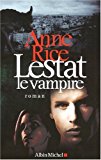
Chroniques des vampires - Tome 2 - Lestat le Vampire
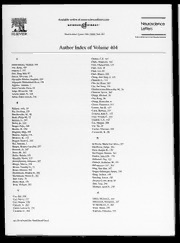
Neuroscience Letters 2006: Vol 404 Index

Statutes of the Province of Ontario 2006 pt. 3

Office Ergonomics
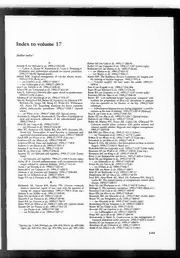
Journal of Vascular Surgery 1993: Vol 17 Index

AMO Overview
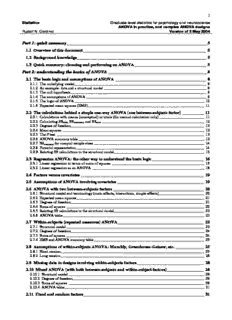
understanding the basics of ANOVA

Process and Plant Safety
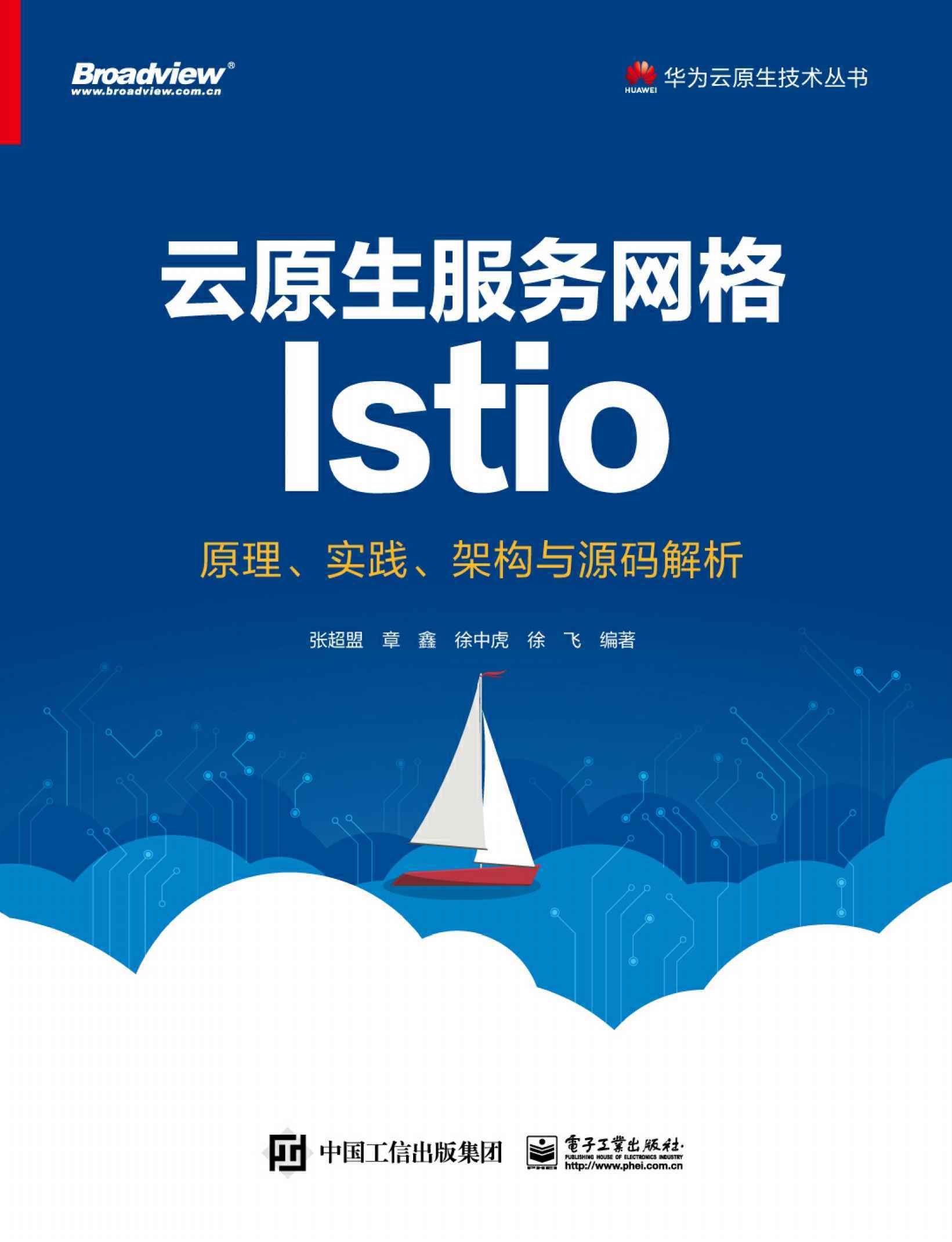
云原生服务网格Istio:原理、实践、架构与源码解析(elib.cc)
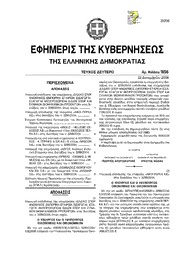
Greek Government Gazette: Part 2, 2006 no. 1856
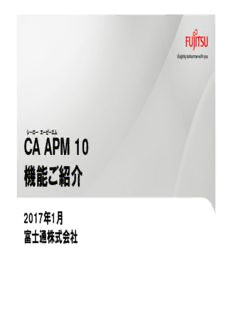
CA APM 10 機能紹介資料
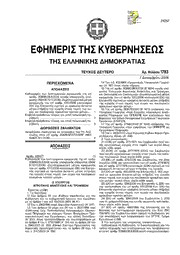
Greek Government Gazette: Part 2, 2006 no. 1783
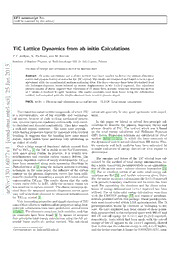
TiC lattice dynamics from ab initio calculations
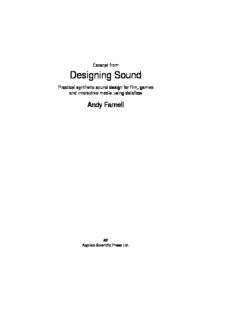
by Andy Farnell
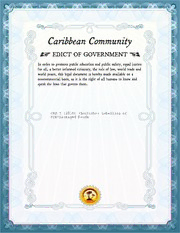
CRS 5: Labelling of Pre-packaged Foods
